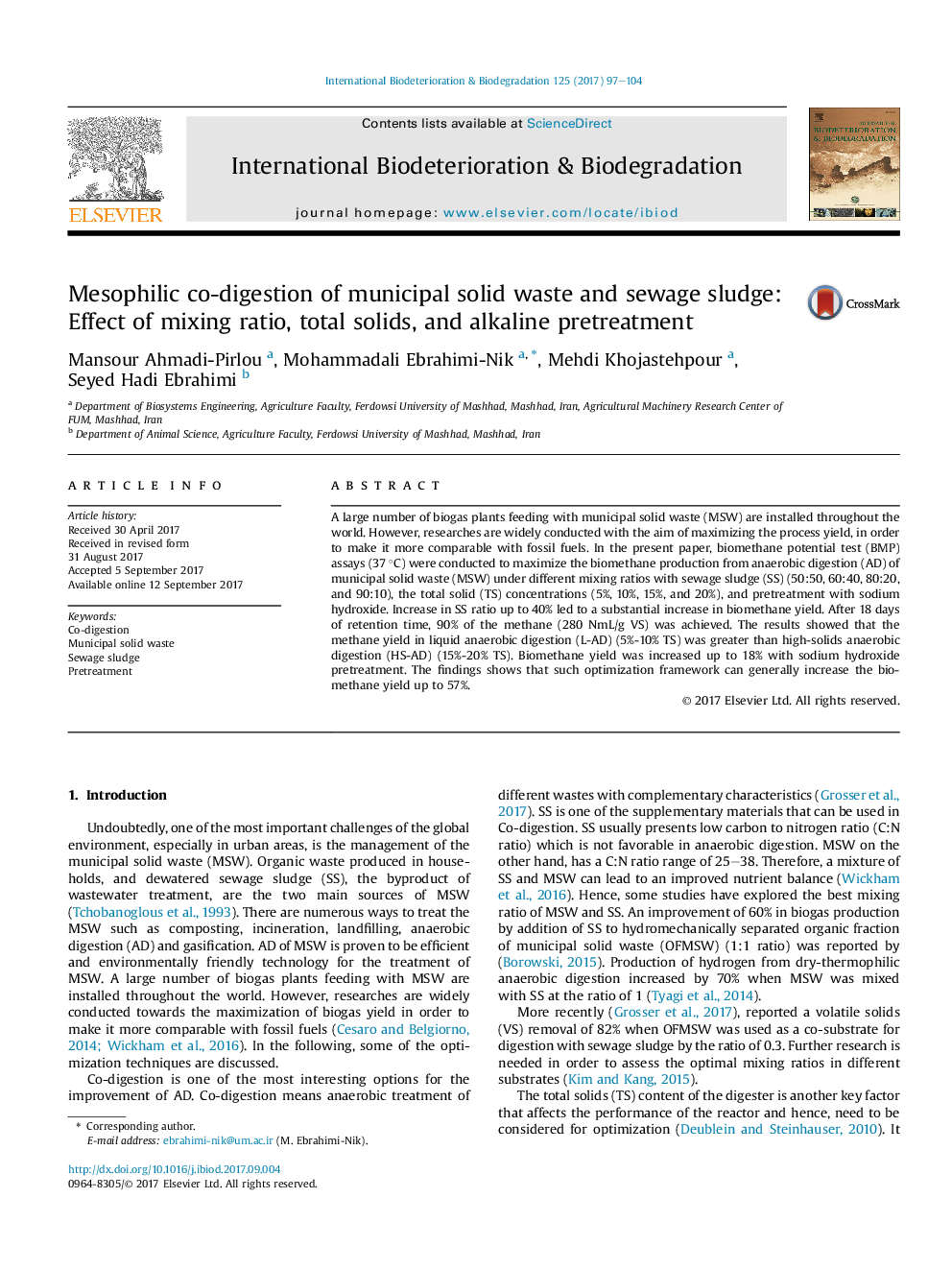| Article ID | Journal | Published Year | Pages | File Type |
|---|---|---|---|---|
| 5740295 | International Biodeterioration & Biodegradation | 2017 | 8 Pages |
â¢Three stepwise assays were conducted for optimization of biomethane yield from MSW.â¢Addition of more than 40% SS, decrease the biomethane yield and VS reduction.â¢Low solid digestion resulted in higher degradation and methane yield.â¢Maximal biomethane yield of 337 L kgâ1 VS was obtained after pretreatment with NaOH.â¢Volumetric methane yield at HS-AD was 2-fold over that of L-AD.
A large number of biogas plants feeding with municipal solid waste (MSW) are installed throughout the world. However, researches are widely conducted with the aim of maximizing the process yield, in order to make it more comparable with fossil fuels. In the present paper, biomethane potential test (BMP) assays (37 °C) were conducted to maximize the biomethane production from anaerobic digestion (AD) of municipal solid waste (MSW) under different mixing ratios with sewage sludge (SS) (50:50, 60:40, 80:20, and 90:10), the total solid (TS) concentrations (5%, 10%, 15%, and 20%), and pretreatment with sodium hydroxide. Increase in SS ratio up to 40% led to a substantial increase in biomethane yield. After 18 days of retention time, 90% of the methane (280 NmL/g VS) was achieved. The results showed that the methane yield in liquid anaerobic digestion (L-AD) (5%-10% TS) was greater than high-solids anaerobic digestion (HS-AD) (15%-20% TS). Biomethane yield was increased up to 18% with sodium hydroxide pretreatment. The findings shows that such optimization framework can generally increase the biomethane yield up to 57%.
